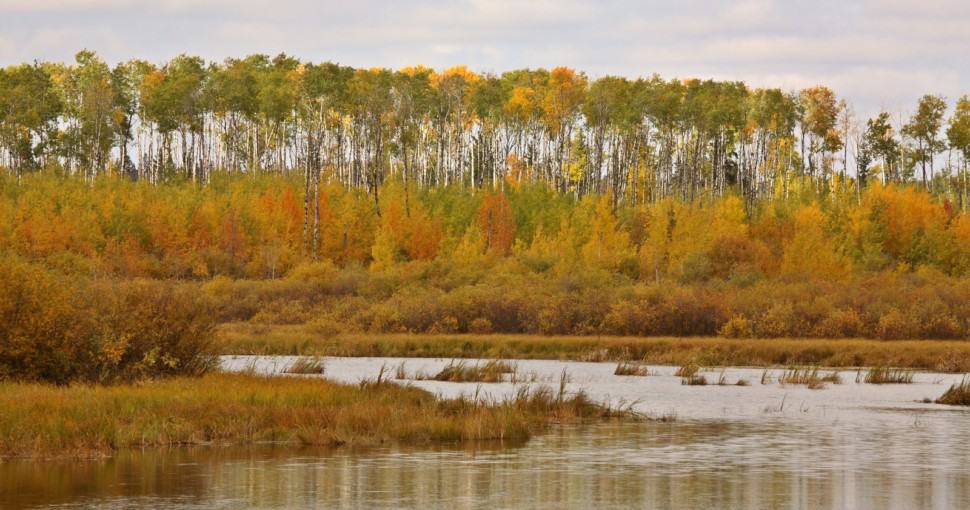Aspens are beautiful grayish-white or greenish-white barked trees that grow tall and straight sport round leaves and form extensive stands. They prefer cooler climates growing optimally in hardiness zones 1 – 6. Luckily for us, these trees that offer spectacular visual sights are not alone. There are other trees out there that have a similar appearance or nature.
Contents
You can split aspen trees between two main species. The Big-Tooth Aspen (Populus grandidentata) and Quaking Aspen (Populus tremuloides) are remarkable sights growing up to 60 – 85 feet tall. Their unique coloration sets them aside from most other trees, but a few out there share a similar coloration.
Another aspect you can look at when looking for trees similar to aspen is the leaf structure. Aspens produce large, almost entirely round leaves, perched on long stems and with rounded teeth on their edges. The leaves can get as wide as 3 inches, and reports indicate that the leaves of the big-toothed aspen have reached sizes of 3.5 inches long and 2/2.5 inches wide.
Another visually enticing aspect of this tree is that its leaves turn from their usual green to a beautiful gold-yellow in the fall. The one downfall of this beautiful tree is that they will typically only live for around 25 years when utilized for landscaping. Let’s look at what other trees are out there that are similar to aspen trees.
1. Silver Birch (Betula Pendula)
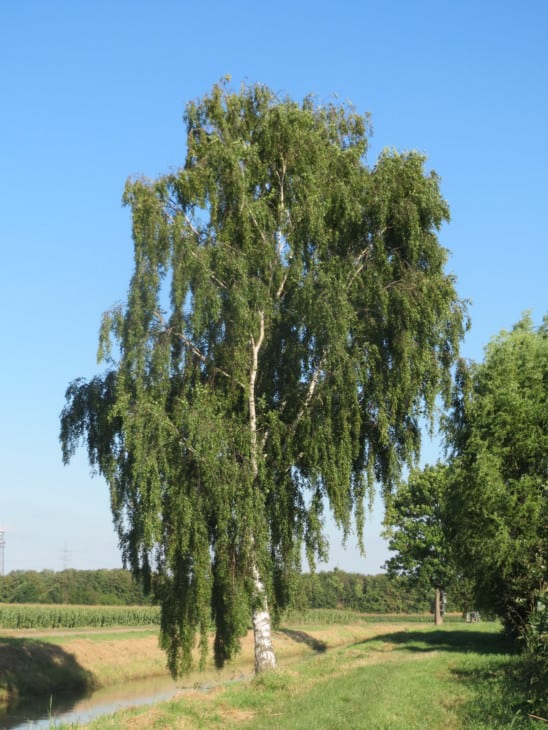
The silver birch is one of the trees that is exceptionally similar to the aspen, and they are so similar that often people get confused between the two. The silver birch also sports the same white bark on its trunk, and its leaves also turn a spectacular bright yellow during fall.
The silver birch grows 30 – 40 feet tall prefers partial shade in the afternoons and full sun in the mornings with well-drained, medium to wet sandy soils in hardiness zones 2 – 7. You can grow this tree in zones 8 and 9, but its life expectancy will be shorter.
This tree will not do well in areas with high humidity or warm summers. Another aspect to consider is that the silver birch is invasive in some areas, so it’s best to check to make sure it is ok to plant it in your locality first.
2. California Sycamore (Platanus Racemosa)
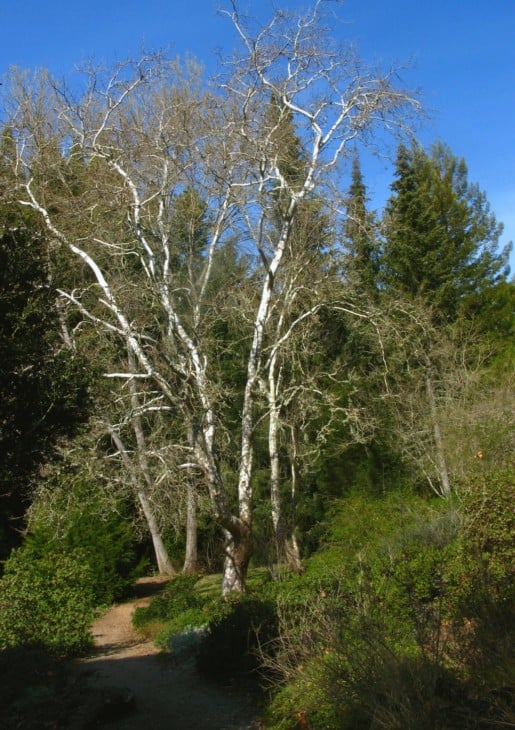
The California sycamore similarities to the aspen tree include its tall trunk, which in this tree typically divides into two or more. The bark is a patchwork of colors, including white, which is one of the reasons it is on this list, and pale brown, tawny beige, and pinkish grey; the older the bark, the darker the color before peeling away from the tree.
The California sycamore also sports large leaves that can grow up to 9.8 inches wide, starting a beautiful bright green before changing color to orangish-red and golden in the fall. This tree prefers hardiness zones 7 – 10, growing 40 – 100 feet tall at maturity, prefers a minimum of 6 hours of unfiltered sunlight a day, and well-drained, moist sandy soils.
This tree is excellent for more extensive landscaping and is fairly drought tolerant but will grow best if given adequate water. You can commonly find these trees along floodplains, streams, and canyons in their natural habitats.
3. Ghost Gum (Corymbia Aparrerinja)
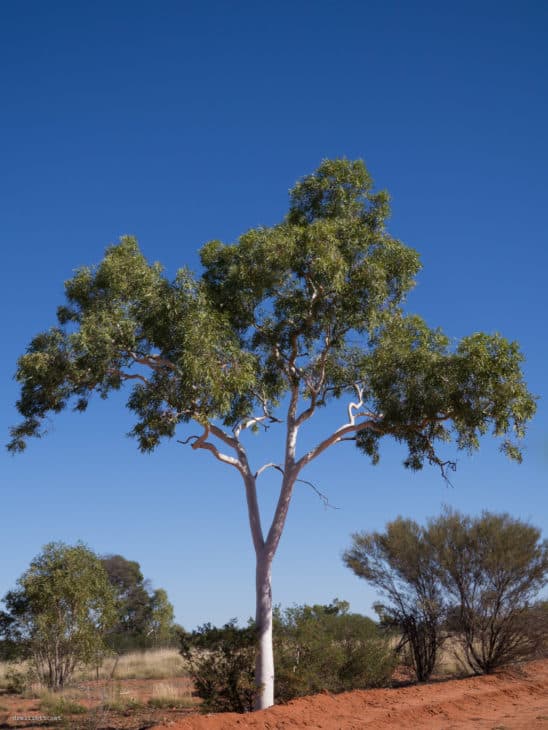
The ghost gum is another tree added to this list due to its smooth, unique trunk, which sports cream to white colored and pinkish bark. The young ghost gum produces egg-shaped leaves 2 – 6.1 inches long, and as the tree matures, its leaves become more lance-shaped and grow 2 – 6.5 inches long.
The ghost gum can grow up to 66 feet, but they don’t usually get that tall. Hailing from Australia, these trees prefer hardiness zones 8 – 10, full sun to partial shade, and well-draining soils. Soils that remain wet for too long can lead to root rot in these trees.
The ghost gum is excellent as a shade tree in landscaped areas. Their unique appearance and fast growth make them popular ornamental trees. When choosing where to plant this tree, keep in mind that it has fast-growing roots that could damage close structures. It also drops many leaves, which could potentially damage vegetable gardens.
4. London Plane Tree (Platanus x Acerifolia)
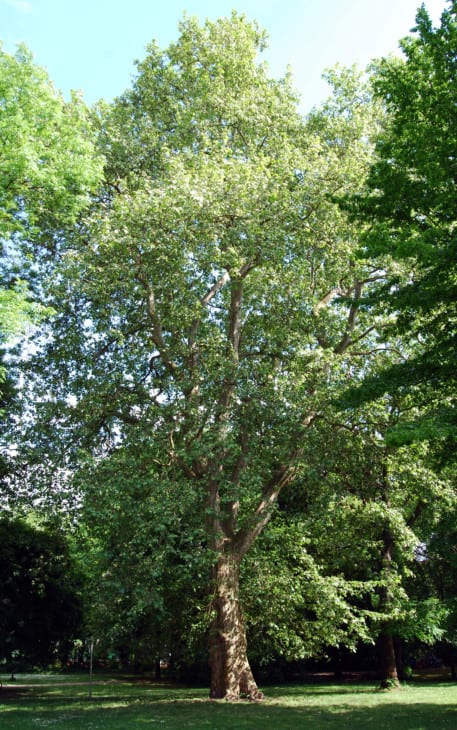
The London plane tree resembles the aspen in its grayish white trunk covered by olive green that you can peel away to unveil the white coloration beneath. Its leaves turn a beautiful yellow-orange color during fall, similar to the aspen.
The London plane tree prefers hardiness zones 5 – 9, partial shade to full sun and clayey, sandy, or loamy soil. It grows from 75 – 100 feet tall in optimal conditions, and its leaves grow around 4 – 9 inches wide in a lobed fashion.
The London plane tree can be used in urban settings only if a large tree is needed. This tree is a fast grower once it has established itself and can live for around 400 years. It has a high tolerance for air pollution, and you can often find it in large city parks or public lands.
5. Western Cottonwood (Populus Fremontii)
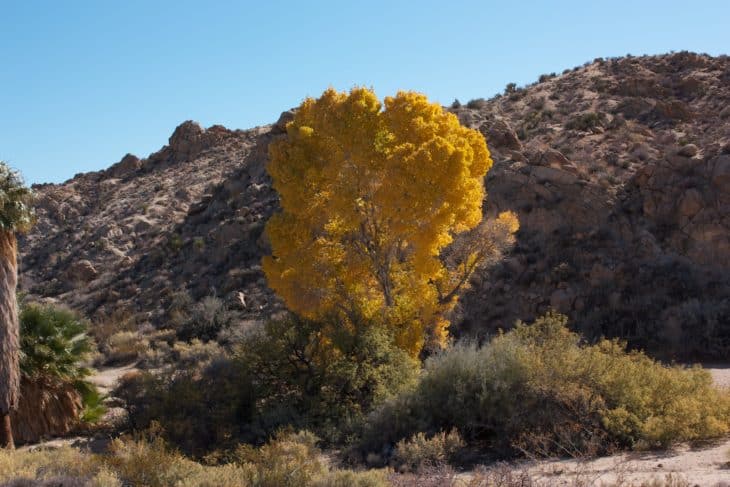
The similarities between the western cottonwood tree and the aspen revolve around their leaves. The western cottonwoods leaves alternate between oval-rounded, triangular, and rhombic with small teeth marks on the edges. In the fall, the leaves turn a visually spectacular yellow color.
The western cottonwood grows 40 – 60 feet tall, with some recorded at heights of 100 feet. This tree thrives along river beds, stream banks, and wetlands. It prefers moist soils and full sun and grows best in hardiness zones 3 – 9.
6. Oakleaf Mountian Ash (Sorbus x Hybrida)
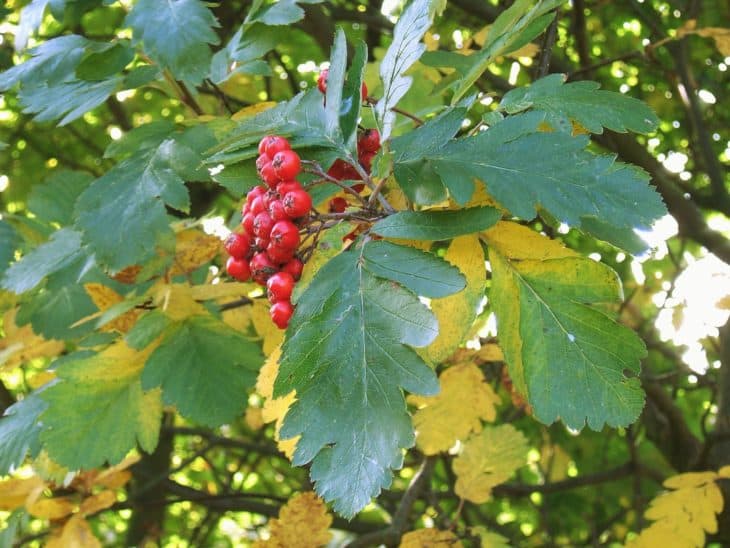
The oakleaf mountain ash is similar to the aspen as it has a singular trunk with gray bark. The leaves, which are lobed and grow 2.7 – 4.7 inches long, turn a beautiful bronze-yellow in the fall. The tree itself grows up to 32 – 49 feet tall.
Oakleaf mountain ash prefers hardiness zones 3 – 7, and it will do well in full sun and well-drained soils. This tree is relatively low maintenance and is tolerant of air pollution. It would be best not to plant it close to powerlines and be mindful that it has a clearance typically only 4 feet from the ground.
7. Eastern Redbud (Cercis Canadensis)
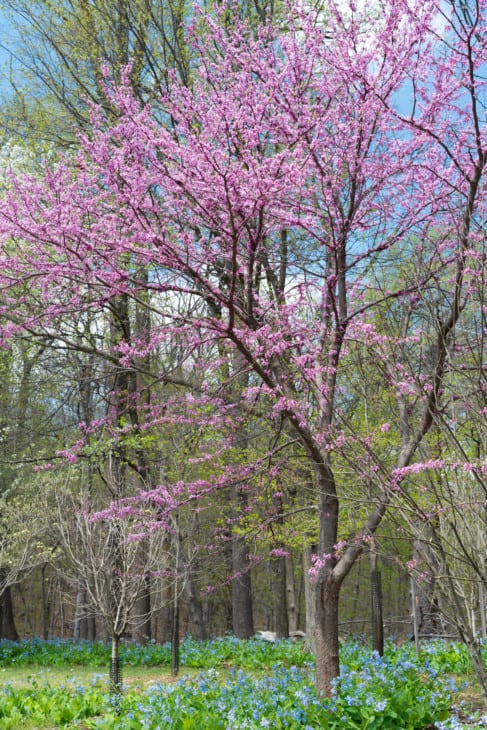
The eastern redbud inclusion on this list is due to its green leaves, which are this color for most of their growing season and then turn a greenish-yellow color in the fall. The leaves are heart-shaped and grow around 3 – 5 inches wide.
The eastern redbud prefers hardiness zones 4 – 8, partial shade to full sun, and well-drained soils. It grows up to 20 – 30 feet tall and spreads out 30 – 35 feet wide. It produces the most spectacular pink flowers in the late winter or early spring, which spread across the tree, making it seem like the tree is shrouded in pink leaves.

